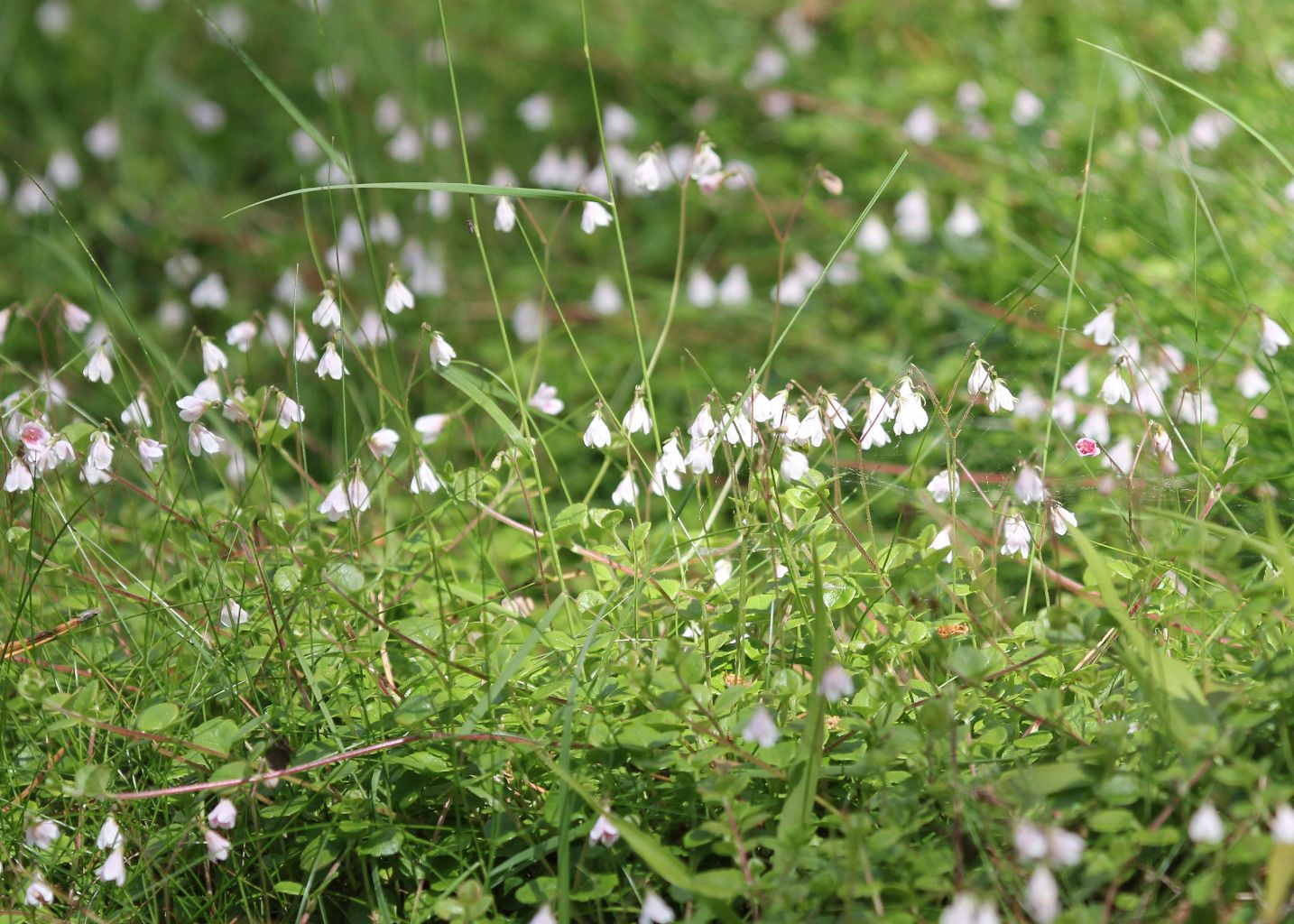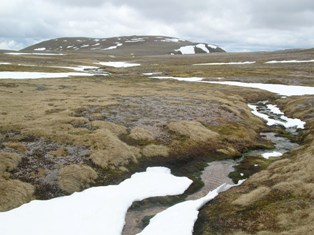
South Aberdeenshire is a very large vice-county, at 2896 sq. km. It ranges from the high tops of the Cairngorms through native Scots pine and birch woodlands, commercial conifers, expansive heather moorlands and bogs, large rivers and mixed farmland through to the city of Aberdeen and an open, largely sand dune dominated coastline. Further information about the wildlife and habitats of north-east Scotland area can be found in the links listed below.
Changes in plant habitats
Botanical recording is greatly influenced by changing habitats. Here are two examples of change – one slow and relatively natural, the other rapid and catastrophic. The pinewoods of Glen Derry on Mar Lodge Estate near Braemar were photographed in 1948 by Adam Watson and again in 2012 by Ian Francis. Differences in vegetation are clear, illustrating the changing nature of the plants that are likely to be recorded.
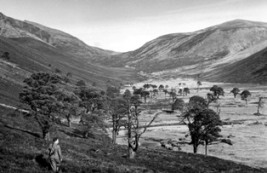
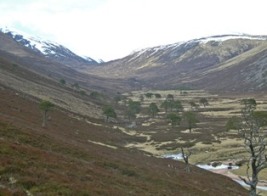
By contrast, in 2008, permission was granted to the businessman Donald Trump to develop a golf course on Menie Estate, which contained one of the largest expanses of important dune habitats in the UK. This development has now happened, and the rapid, stark vegetation change and habitat loss is clear. More examples can be found in the document that can be downloaded here. The BSBI, through David Welch, fought this development in a public enquiry, alongside the RSPB (including the current v.c. 92 recorder Ian Francis) and Scottish Wildlife Trust. Sadly, the case was lost and plants badly affected by the development include at least ten threatened species including Curved Sedge (Carex maritima), Small Adder’s-tongue (Ophioglossum azoricum) and Heath Cudweed (Gnaphalium sylvaticum). Despite that, BSBI plant records played an important part in building the conservation case. Further information can be found on page 47 of BSBI News 109.
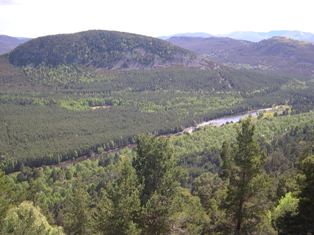
BSBI projects in v.c. 92
The main project local botanists have helped with over the past few years has been the Threatened Plants Project. This has provided very useful site and population details for a range of uncommon plants, including Spignel (Meum athamanticum), Intermediate Wintergreen (Pyrola media), Hairy Stonecrop (Sedum villosum), Sibbaldia, Maiden Pink (Dianthus deltoides), Field Gentian (Gentianella campestris), Heath Cudweed (Gnaphalium sylvaticum), Holly Fern (Polystichum lonchitis), Annual Knawel (Scleranthus annuus), Corn Marigold (Chrysanthemum segetum), Small White Orchid (Pseudorchis albida) and Frog Orchid (Coeloglossum viride).
The main ongoing project is to gain records for the next planned UK plant Atlas 2020, which will cover the period 2000-2020. Every plant recorder has a part to play!
Botanical coverage
Many parts of v.c. 92 have not been visited by botanists for many years, and almost anywhere is worth exploration, and lists of plants from under-recorded parts of the area would be very welcome indeed. The maps below (number of species per tetrad) show coverage as at the end of 2013 and the end of 2015 – progress is being made!
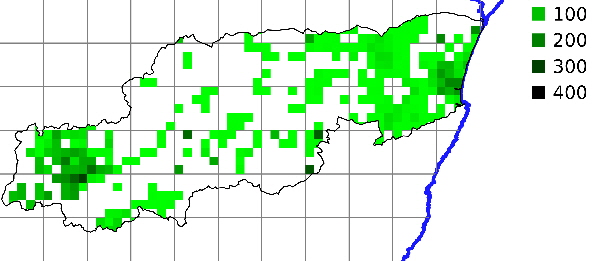
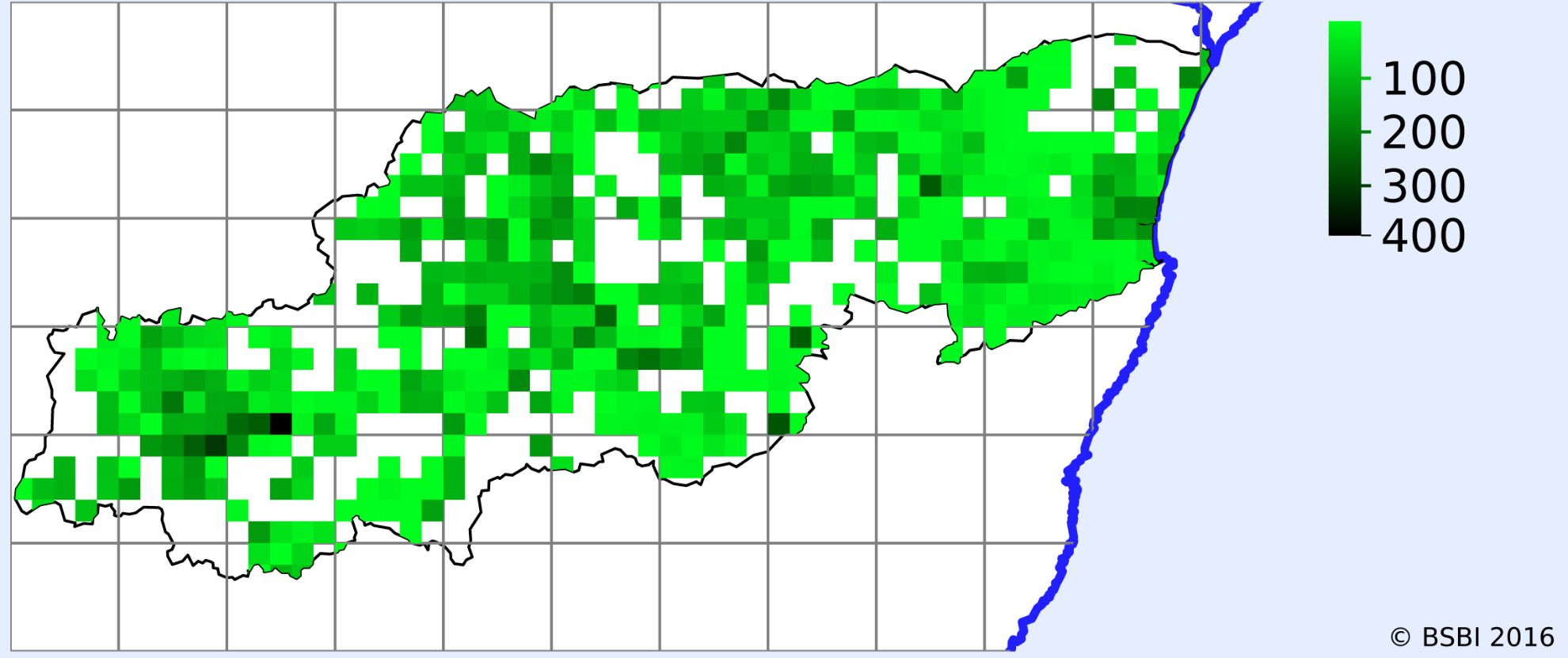
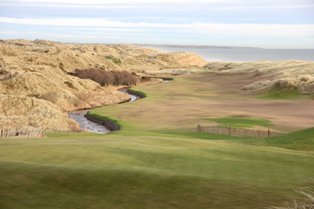
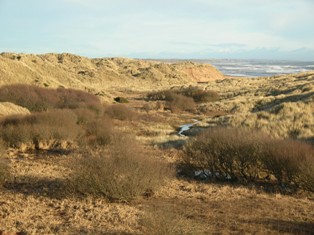
County Recorder
Links
Although there is no up to date flora covering all of South Aberdeenshire, useful information relevant to VC92 can be found in the flora of the Cairngorms National Park on the webpage for v.c. 94, adjacent to South Aberdeenshire.
